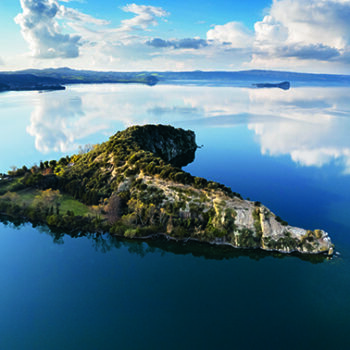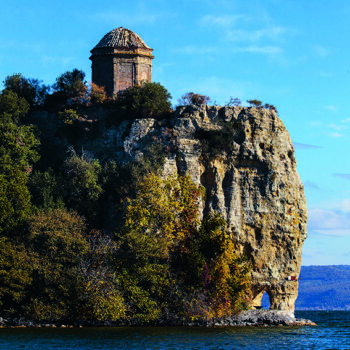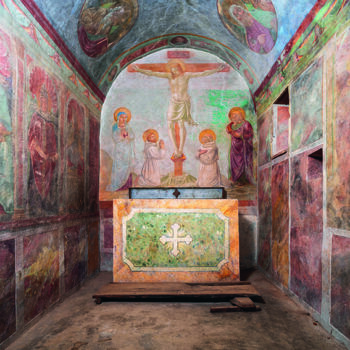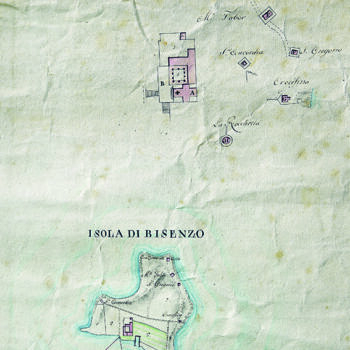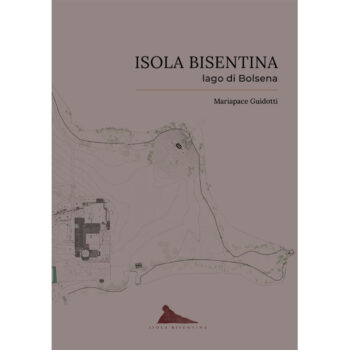Isola Bisentina is one of the two islands in Lake Bolsena, the larger by area, located opposite the town of Capodimonte. Mentioned by Dante in the Divine Comedy, it is near the western shore, a few kilometers from the promontory where the ancient Etruscan-Roman city of Bisenzio once stood, from which it takes its name. Thanks to a favorable microclimate, it boasts lush vegetation with numerous valuable tree species, including some ancient trees.
The traces of pile-dwelling settlements off the island indicate that the area was inhabited as early as the archaic period, and the continuous human presence is evidenced in the Etruscan and Roman eras by findings dating from the 6th century BC. Later, the island provided refuge for the inhabitants of lakeside towns destroyed by the Lombards and Saracens. During the Middle Ages and the Renaissance, it was known as a prison for heretics, until it became the possession of the powerful Farnese family, who built the Church of Saints James and Christopher there, with the dome designed by a pupil of Vignola, to create the family tomb: it was during this period that several popes visited, earning Bisentina the nickname “Island of the Popes.”
The seven chapels on its shores, as well as the convent, were built by the Friars Minor: the Chapel of Santa Caterina is attributed to Antonio da Sangallo the Younger, one of the most prominent architects of his time, while the frescoes in the Chapel of Mount Calvary are believed to belong to the school of Benozzo Gozzoli.
Mariapace Guidotti is a tour guide and an expert on the city and territory of Bolsena, particularly Isola Bisentina.
